MXA INTERVIEW: TIM FERRY IN RACING IN THE SHADOW OF THE GIANTS
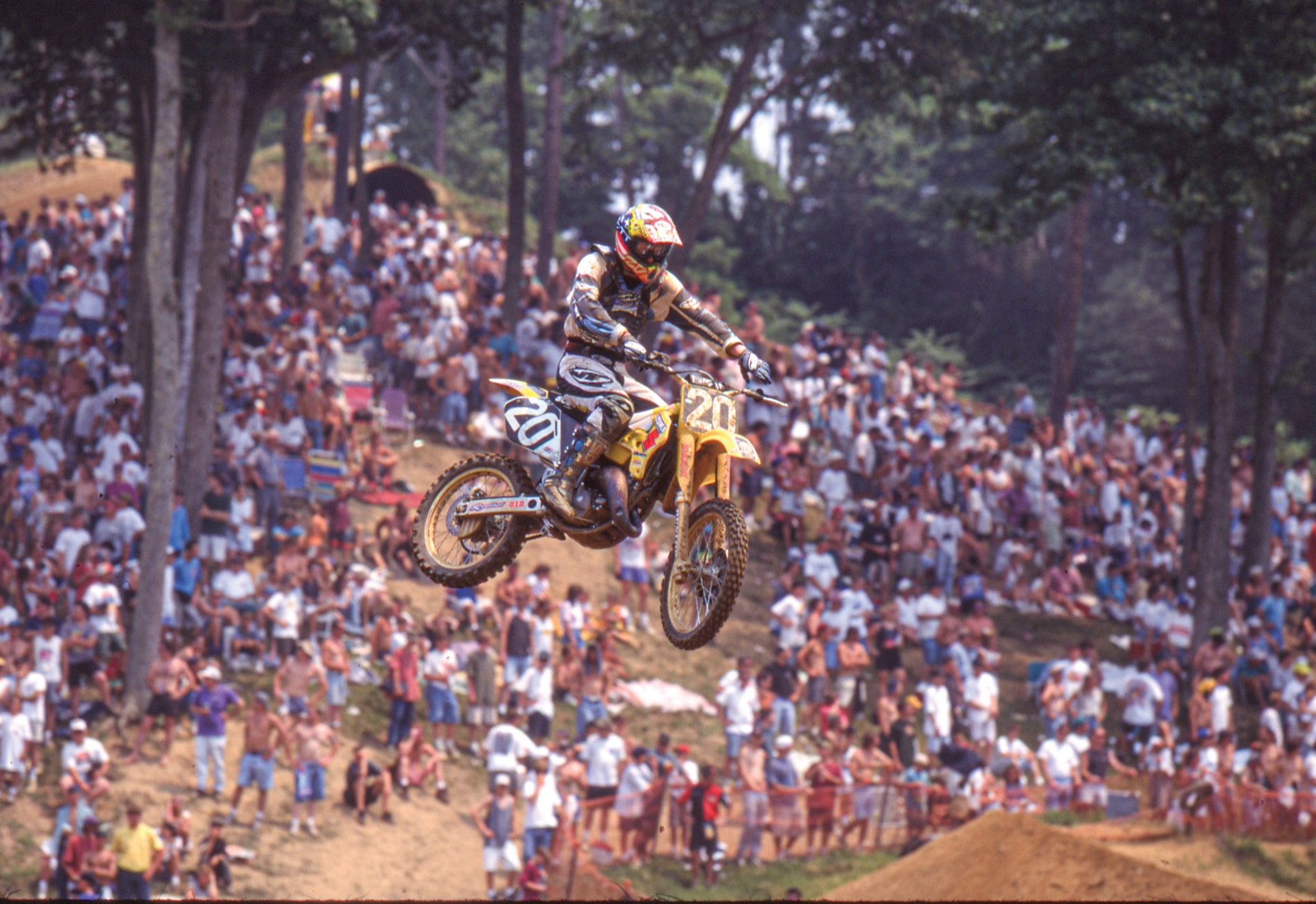 Tim on his 1996 Suzuki RM125.
Tim on his 1996 Suzuki RM125.
TIM, LET’S BEGIN WITH THE EARLY DAYS OF YOUR PRO CAREER. WHAT WERE THOSE DAYS LIKE? I raced a couple of Outdoor Nationals in 1991. Then, in 1992, I raced half of the Supercross series and some Nationals. I went back to Loretta’s in 1992, and after that I was Pro full-time. From 1993 on, I did the whole East Coast Supercross Championship series and then all the Outdoors.
HOW WERE THOSE FIRST COUPLE OF YEARS WITH A BARE-BONES PRIVATEER DEAL? It was decent. I was getting help from RRP out of New Jersey, so I would fly from West Palm Beach, where I lived, to New Jersey all the time. At that time, there were still many motocross rounds in the Northeast, such as Steel City, Binghamton, Unadilla, and Southwick. I would fly in and then drive to the races with my team. While it was really a true privateer effort, it was like having a factory ride compared to how I grew up, so I really did not know any better. I was just happy to have someone paying for my hotel room and flying me to Jersey. It was not really costing me anything, and whatever I made, which was really not a lot, I was able to keep. Looking back on it, if I had been a factory rider and had to go back to what I had at that point, it would have been tough.
“DURING MY FIRST THREE YEARS RACING SUPERCROSS, I NEVER PRACTICED ON A SUPERCROSS TRACK, NOT IN 1992 OR 1993. MAYBE A LITTLE BIT IN 1994, BUT IT WAS NOT ON A FULL-ON SUPERCROSS TRACK. WE JUST WENT TO EACH SUPERCROSS ROUND AND RACED.”
DID YOU GO TO PUBLIC SCHOOLS? Yes, and I graduated from high school in 1993, so I was making a little bit of a living racing while I was still going to school full-time. I graduated in 1993, and I got the opportunity to go live with Ronny Tichenor in Palm Harbor, Florida. The next year, I did a lot better. I could concentrate on racing, and being around some pro riders versus going to high school helped a lot.
HOW DID YOUR FACTORY SUZUKI DEAL COME ABOUT? Well, in 1994, I had quite a few podiums. Actually, I had a few in 1993 as well, but in 1994 I did really well in Supercross. I think it was Jimmy Button who was the guy that beat me, and I was the next guy in line. I think I got third in the series. I was pretty much the next guy in line and signed my deal with Factory Suzuki at Southwick, so I was super excited about that. It was not a big payday, but the bikes were good. I got a box van and a mechanic, and I could fly to every race. A lot of those things make a big difference in your program with just being able to not have to worry about anything—just getting on an airplane and going to the races.
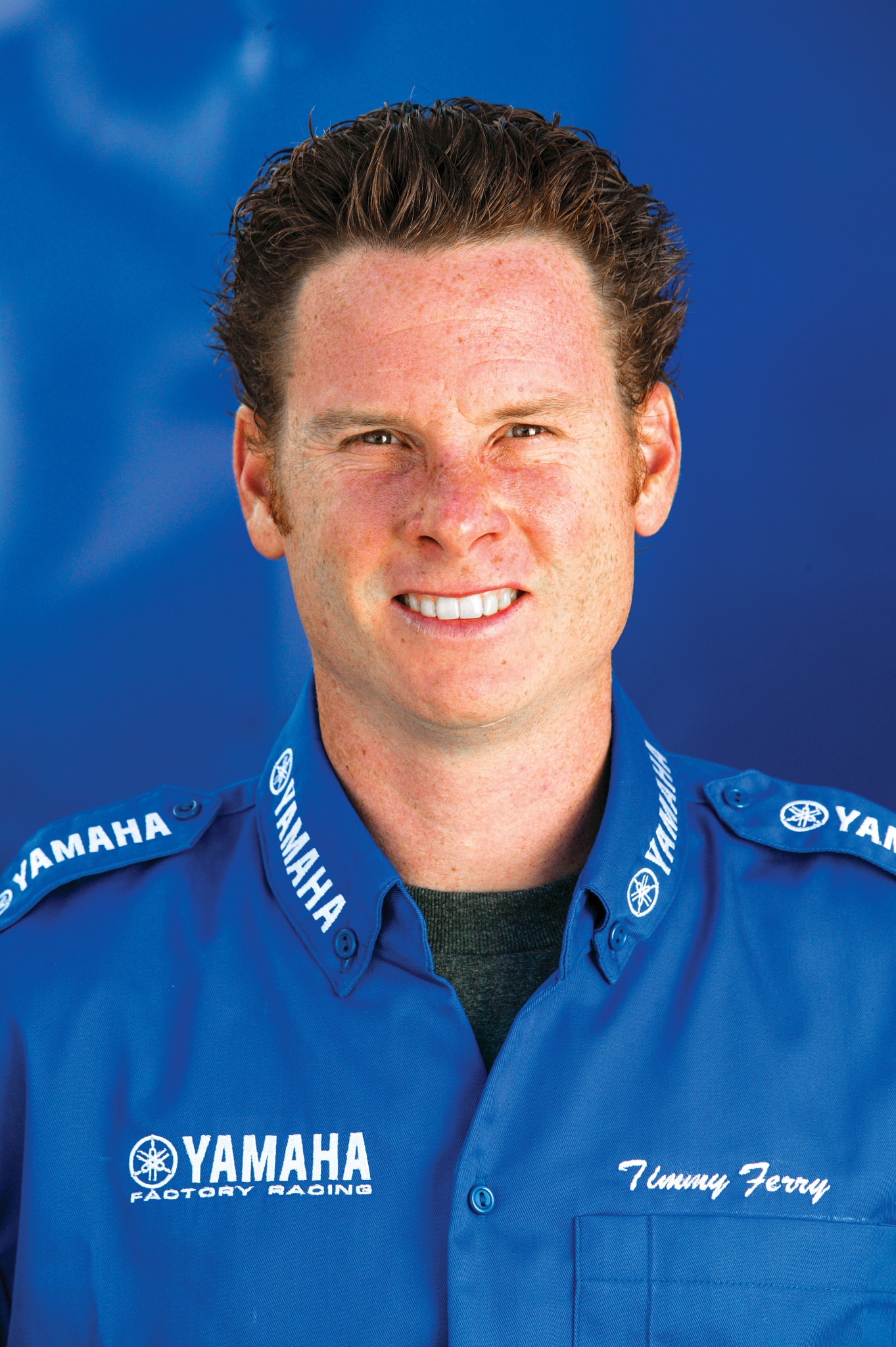
THAT MUST HAVE BEEN A HUGE DEAL! It was a huge difference. Obviously, I had a team manager, suspension guy and many other people at the races to lean on, so it was definitely a big step up. But, I think times were tougher back then. Everybody has a trainer, a coach and a practice track. I was somewhat naive with the training aspect, and I was not really around actual Pro riders until 1994. So, I rode a lot but did not do a ton of training. As I got more involved with Suzuki, by 1997 Roger DeCoster had me in California. I got with a trainer out there, and I ended up winning a title in about a year or so. I truly evolved once I was on that team for those three years.
NOW, FLORIDA IS THE HOTBED OF PRO MOTOCROSS, BUT BACK THEN CALIFORNIA WAS EVERYTHING. California was the place to be. Obviously, I am from Florida, so it is a natural fit for me, but there was a lot of commuting to California back then. It changed with Ricky Carmichael, who is from here as well. Then Chad Reed came, and now all the guys come here for the riding and training, especially with the cost of living being quite a bit cheaper. Back then, my friends had a little farm that we started riding at in 1994. There was a Supercross track there, but other than that, there were not any facilities or anything like that. We rode in abandoned fields for training, and that is why the training is so much more sophisticated now.
YOU IMMEDIATELY HAD SOME GOOD RESULTS ON THE FACTORY SUZUKI, RIGHT? Yes, in 1995 I won the first race in Orlando, and then the next race I did so-so. I think I did one more race before, unfortunately, I hit a triple in first gear in Houston. I thought I was in second gear, so I cased the triple and broke my jaw. I ended up missing the rest of that season. That was going to be a really good year for me. The Suzuki was really good that year. I came back for Outdoors and I won a moto at the first round; then I think I got on the podium and got third overall. All in all, that first year with Suzuki was really good.
OBVIOUSLY, GROWING UP YOU RACED A LOT OF MOTOCROSS, BUT HOW DID YOU GET SO GOOD AT SUPERCROSS SO SOON? I don’t really know. I grew up riding in a lot of sand on blown-out tracks. During my first three years racing Supercross, I never practiced on a Supercross track, not in 1992 or 1993. Maybe a little bit in 1994, but it was not on a full-on Supercross track. We just went to each Supercross round and raced. In 1995, things started picking up. We had a track in California, which really helped. Then moving forward, I ended up building my own facility and track in 1998, just so I could have a place in Florida where I could ride, train and get better.
YOU HAD SOME INJURIES IN YOUR SUZUKI YEARS, BUT STILL YOU WON THE 1997 125 EAST SUPERCROSS TITLE! Yes, 1997 was when Ricky Carmichael came into the Pros for the first Supercross season, but I already had the ball rolling a little bit for me. Roger DeCoster made me go to California that year just to keep a little bit of an eye on me. My mechanic was out there with me, too. In all honesty, Stephane Roncada was tough that year, but he broke his thumb halfway through the season, which left it wide open for me. Carmichael was the fastest, and then Roncada and I were pretty close. Carmichael kept crashing, so once Stephane got hurt, I did not really have to race with Carmichael to win that championship. There were a few times when I probably could have done a little better, but Roncada had already broken his thumb, and I watched Carmichael crash on the weekends because he was going super-fast. Really Carmichael was super wild in his rookie year, and I was just thinking, “I am just going to take it easy and win this championship.” I was going to move up the next year, so I really wanted the #1 plate.
IS IT TRUE THAT YOU WON THAT 125 SUPERCROSS CHAMPIONSHIP BUT HAD NO FACTORY OFFERS FOR 1998? I think with Carmichael being faster than me, it took a little away from my championship. Suzuki had a really big 250 team back then (which is the 450 class now), so there wasn’t a spot for me. There were a lot of good riders in 1998. Honda had maybe three or four and Yamaha had a bunch. There were just some guys that were a little better than me at the time. Now, if you win a championship, with the honor system, they find a place for you; but, back then it was a weird time. I had to move up and did not get to defend the title, either. If I could have defended the title, Roger said he would have hired me again, but he did not have any room for me on the bigger bike. Looking back on it, it was a bummer. It made me hungry. The next year, I was a privateer, and I bought some land in Florida and built my own Supercross track. I started taking the next step to be a guy who could run up front in the big bike class.
 Tim ended up on the privateer Noleen Yamaha team after winning the 1997 125 East title and pointing out.
Tim ended up on the privateer Noleen Yamaha team after winning the 1997 125 East title and pointing out.
BUT YOU FOUND A 250 RIDE ON A PRIVATEER YAMAHA FOR 1999. WHAT WAS THAT LIKE? It was one of the hardest jumps for me, because I took a step backward. The Noleen Yamaha guys were awesome, but at the same time, I was going against 15 factory big bike guys. I was making the transition to the bigger bike, which I was nervous about for some reason. I don’t know why, but I was a little nervous to jump into that class. The bike was okay, but It was not great. I had decent rides, though. I hurt my knee in Supercross and my season got cut short about halfway through that year.
“IT WAS GOOD TO BE AROUND JEREMY, TO SEE SOMEONE LIKE HIM IN HIS PRIME. I GOT TO WATCH AND SEE WHAT HE DID. IT WASN’T ANYTHING SPECTACULAR, BUT IT WAS JUST GOOD TO BE AROUND THAT ENVIRONMENT AND HAVE A SENSE OF WHAT SOMEONE AT THE TOP WAS DOING.”
YOU HAD A FANTASTIC RIDE AT THE 1999 INDY SUPERCROSS. I believe I got third there. I remember Jeremy McGrath was catching me, and I think Ezra Lusk won. I don’t remember who got second, but I got third. It was my first podium in the big class. McGrath and I were buddies back then, and we did a lot of riding and training together. On the podium, Jeremy looked over at me and said, “What are you doing up here?” He was almost dumbfounded that I got third. That was definitely a breakthrough moment for me on the big bike. When the season came to an end, the Noleen team was working with a small budget, but Chaparral was looking for a rider for the outdoor Nationals. At that time, McGrath was Supercross only, so I went to the Chaparral team under Larry Brooks.
SO, THAT HAPPENED IN 2000? Steve Lamson was Chaparral, but he was kind of on his way out. He was a great rider and had won a bunch of championships, but he was over it. I took his spot on the Chaparral team for 2000. It was McGrath and me on the team. It was good to be around Jeremy, to see someone like him in his prime. I got to watch and see what he did. It wasn’t anything spectacular, but it was just good to be around that environment and have a sense of what someone at the top was doing.
BUT IN 2001 YOU GOT AN OFFER TO RIDE THE YZ426 FOUR-STROKE. After Jimmy Button got hurt, Yamaha was looking for someone to ride the YZ426 four-stroke. For me, it was a choice between the Chaparral Yamaha team or the factory Yamaha team on the four-stroke. I went out on a limb and decided to ride the Yamaha YZ426.
WHAT WAS IT LIKE TO RACE THE YZ426 WHEN EVERYONE ELSE WAS ON 250 TWO-STROKES? I signed the contract and moved to California. My first day on the YZ426, I could not believe how heavy it was and how much power the bike had. I thought I had made the biggest mistake of my whole life. It was so hard to ride at first.
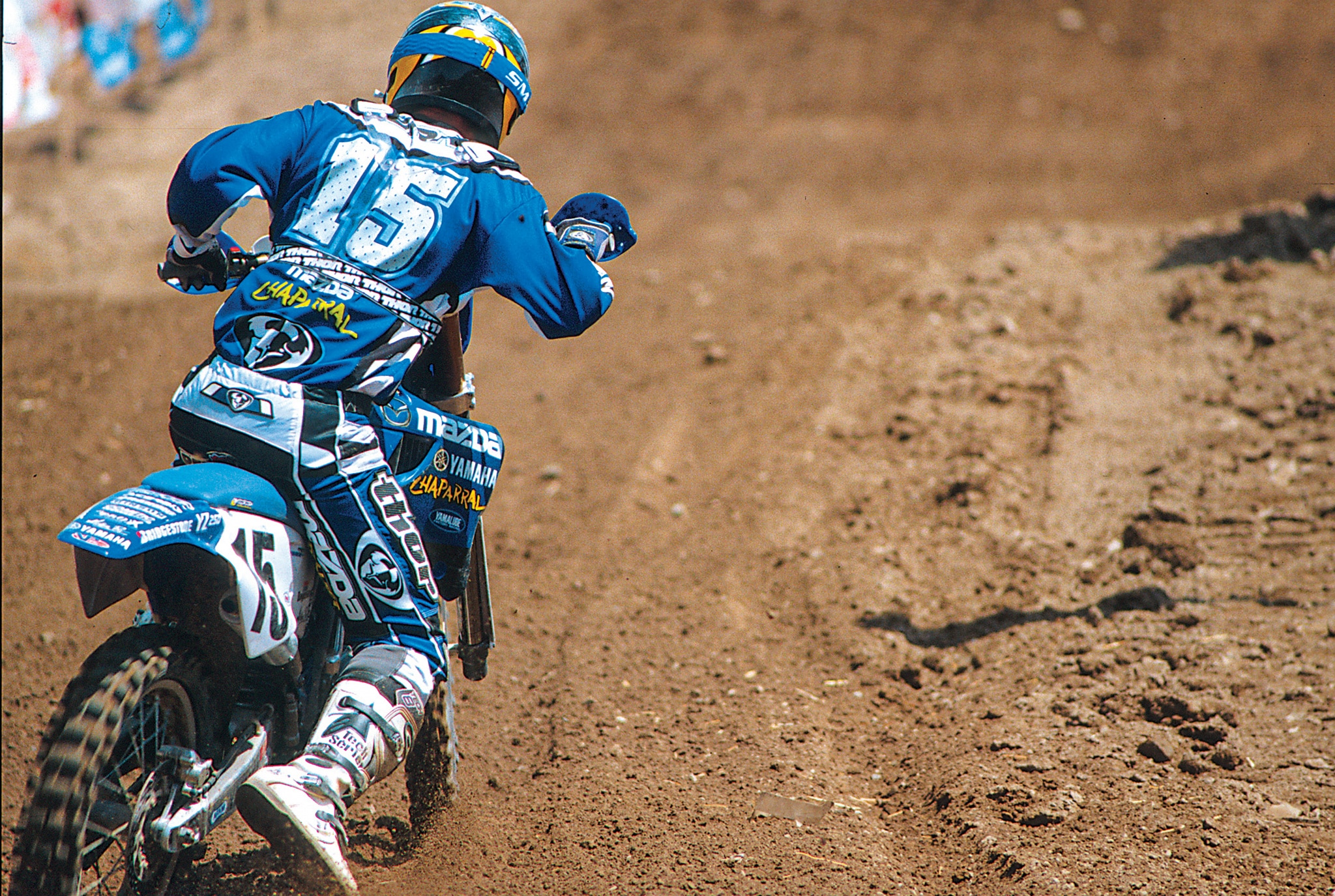 After his Suzuki days ended, Tim raced for Noleen and Chaparral, before being asked to race the Yamaha YZ426 four-stroke
After his Suzuki days ended, Tim raced for Noleen and Chaparral, before being asked to race the Yamaha YZ426 four-stroke
BUT, THAT BIKE REINVENTED YOUR CAREER. Yes, the Supercross season went okay. Yamaha got the YZ426 working better. I got a podium at the Salt Lake City Supercross, and I won the first National that year at Glen Helen. My initial success on the four-stroke was more of an outdoor thing. I would start in third gear because the bike had so much torque. At certain National tracks, the bike was really an advantage, but at other tracks it was a huge disadvantage. I was young and just would go for it. I look back at that season and remember tracks, like Budds Creek and Glen Helen where there were hills, that the bike was awesome.
DO YOU THINK BEING ON THE FOUR-STROKE HINDERED OR HELPED YOU CAREER? Some of my Yamaha years were my best ones. I think there were times when the four-stroke really held me back. For a couple of years, I was the only guy riding one, and I thought, if everyone thinks it’s such a huge advantage, then why wasn’t anyone else riding one? In hindsight, I feel like I spent some of my best years at my physical prime on a bike that was probably not the best bike, especially given that the YZ250 two-stroke was the best bike. But, at the end of the day, racing the four-stroke gave me an identity. I had a lot of fans at the races because I was on the only four-stroke. In the end, I think it all kind of worked out.
TELL US ABOUT YOUR YAMAHA TEAMMATES. David Vuillemin was my teammate the first and second years at Yamaha. Jeremy McGrath was basically our teammate in a sense because he tested with us but rode under Chaparral’s tent. In 2003, Chad Reed moved to the big class with DV and me. The three of us were a really strong and powerful team at that time. I cannot remember if McGrath was around then or not, but there was a time when Yamaha had the top five almost on lockdown.
YOUR TEAMMATES ALL HAD DIFFERENT PERSONALITIES. WHAT WERE THEY LIKE TO BE AROUND? Chad Reed and I hit it off, because when he was racing in the 125 class, he came to Florida and stayed with me. We got along pretty well, but he roosted me one time in practice and I retaliated by running into him and flipping him off. It was just stupid young guys trying to flex their muscles, but that is normal in a sport when you are sitting next to your main competitor and you want to beat him and he wants to beat you. That is the environment, but at the end of the day, we still hung out. And even to this day, we are still friends. We are cool, and I can’t believe he kept racing for so long. David Vuillemin was very funny and a really good guy to have around.
Jeremy had won 72 Supercross races, and he was the King of Supercross; but, he was one of my favorite people. He was the most down-to-earth guy. Whether he won or lost, he was not what you would expect. You might expect someone like him to be standoffish, but he was very helpful. He was somebody that made you feel like everybody is the same on the team. He treated his teammates, the mechanics, the truck driver and even his goggle and gear reps the same. I really liked being around McGrath and being teammates with him.
YOU HAD A SUCCESSFUL FIVE YEARS AT YAMAHA. WHY DID YOU LEAVE? I hurt my wrist in 2004, and it was not the same for the rest of 2004 or into 2005. I had three surgeries, and my wrist was still messed up. Yamaha wanted to keep me, but they could not rely on me because over the previous two seasons I would race three or four races and hurt my wrist again. They could not really hold a seat for me if I was not going to be healthy. I understood that. I got it. At the end of the day, it is business. I ended up going to the Moto XXX Honda team in 2006. It was a huge step down on the team level, but, at the same time, it was a team where I would have no pressure. My results were consistently in the top 10. They were happy, and I could kind of get my feet underneath me again to be able to get back to a factory ride.
 Tim has mixed feelings about being the only rider on a four-stroke, but admits it made him a fan favorite.
Tim has mixed feelings about being the only rider on a four-stroke, but admits it made him a fan favorite.
WEREN’T YOU INTENDING TO RETIRE? Honestly, I was going to quit at the end of 2005. I was not able to do what I really wanted to do, and I had just turned 30. Everybody says the 30-year mark is time to hang it up, so that was in the back of my mind. My coach at the time basically would not let me quit. He did not want me to quit at such a down time. He said I would regret it down the road. I am grateful that he pushed me to go back for another season when I really did not want to do it. After Moto XXX, I had a few more good years at Kawasaki that rebounded my name and my career. I would not say those were my best years, but I had some of my best results. My Yamaha days were really good, but I had a really good time when I went to Kawasaki for my last three years.
“I SIGNED THE CONTRACT AND MOVED TO CALIFORNIA. MY FIRST DAY ON THE YZ426, I COULD NOT BELIEVE HOW HEAVY IT WAS AND HOW MUCH POWER THE BIKE HAD. I THOUGHT I HAD MADE THE BIGGEST MISTAKE OF MY WHOLE LIFE. IT WAS SO HARD TO RIDE AT FIRST.”
HOW DID YOU END UP AT KAWASAKI? It was no different from when I was having rough years and someone else came in and took my ride. At that time, I was beating Michael Byrne, who was James Stewart’s teammate at Kawasaki, and Kawasaki liked what they saw. I think they were ready for a change, but I never got an offer from them. Then, at the Binghamton National, Kawasaki team manager Mike Fisher came up to me and asked, “Are you excited about the ride?” At this point I was a little standoffish because nothing had been signed. This is a cutthroat business, and things could change in an instant. But, I signed a 2007 contract at Glen Helen on the last National of the 2006 season. I did not even know what the dollar figure was on the contract. Two days later, I was riding at the Kawasaki test track.
YOU ALWAYS SEEMED TO LAND ON TEAMS WITH SUPERSTAR TEAMMATES. HOW DID THAT WORK? There were times when James and I were close. He was always faster, a greater rider and a real showman. It was the best dynamic for the team. He was young, super fast and in his prime. I was a little older, had a family, a wife and a kid, so I was not a threat to him. We grew up in Florida together. I got the opportunity, and I made the best of it. I got third in Supercross that year in the series and fourth in the 450 Nationals. There were a few things that were odd. I did not like the way the fans treated James. They would get my autograph and not his. I got along well with him, and I knew how to test the bikes.
YOU RACED MOTOCROSS DES NATIONS A COUPLE OF TIMES. TELL US ABOUT THAT. I raced the Budds Creek MXDN in 2007 and in England in 2008. The first one was with Villopoto, Carmichael and me. The one in England was Villopoto, Stewart and me. Those were really powerful teams to be a part of. We did not dominate at Donnington Park, England. Had Stewart not crashed in that last moto in England, we would have had a perfect score that day, and had Carmichael and I not crashed in the first turn of the first moto, we would have probably gone 1-2 in every moto. That was a cool event.
 Tim at the Motocross des Nations.
Tim at the Motocross des Nations.
WHAT WAS YOUR MOST MEMORABLE RACE? The Motocross des Nations. The 2007 MXDN was the best, in particular because of the American fans. That win was special, and it is amazing that grown men come up to me so many years later and say, “I saw you at Budds Creek when I was just a little kid.” The one that we won at Donnington Park was a lot harder to win, so I really liked the racing aspect of that one. Stewart fell in the last moto and could not get his bike started, so my result really mattered at that one. Both of those years I won my class. Out of everything I have ever done as far as my racing goes, those two events top all of them.
WHAT PROMPTED YOUR DECISION TO FINALLY RETIRE? I did not really have a choice. In 2007 and 2008, Kawasaki’s bike was really good, and in 2009, it just was not. They made a bunch of changes, went to fuel injection and changed the frame on the bike. I was never comfortable. The first race at Anaheim, I got a fourth; but, for whatever reason, after that I struggled to even finish in the top 10. Then I broke my heel at Daytona, and from that moment on, it was game over. So, I really only made it to Daytona in 2009. They put 13 screws in my heel. I tried to come back and ride the Nationals, but I was not physically the same, nor was I mentally the same. I knew from the moment I crawled off the Daytona track that I was done. I was 33 years old, and I never wanted to feel that pain again. That was the first time I had ever had that feeling.

WHAT IS IT LIKE HAVING A FAST SON FOLLOWING IN YOUR FOOTSTEPS? It has always been his choice to ride, and he loves it. At the end of the day, I always loved to ride, and he does, too. I am nervous for him, because I know the reality of the sport. It is a brutal sport. It is tough. It is hard on your body. It is hard to get rides and hard to make money. I don’t think you can really go after it because you want to make money. It has to be in your heart. And in his heart, he wants to do it. You don’t wake up one day as a great dirt bike rider. You have to earn your way into this sport. You cannot buy your way in. It is a very, very unique sport.
TO MANY FANS YOU WERE JUST THE HARD-WORKING, NORMAL GUY. IS THAT YOUR LEGACY IN MOTOCROSS? I did not grow up with a whole lot, and I was appreciative to ride dirt bikes. I never cared about being popular or being the cool guy. I am more of a loner type, so I was never really into the scene. I don’t know how to put a finger on why people are the way they are. You just have to think it is because of the environment they grew up in.


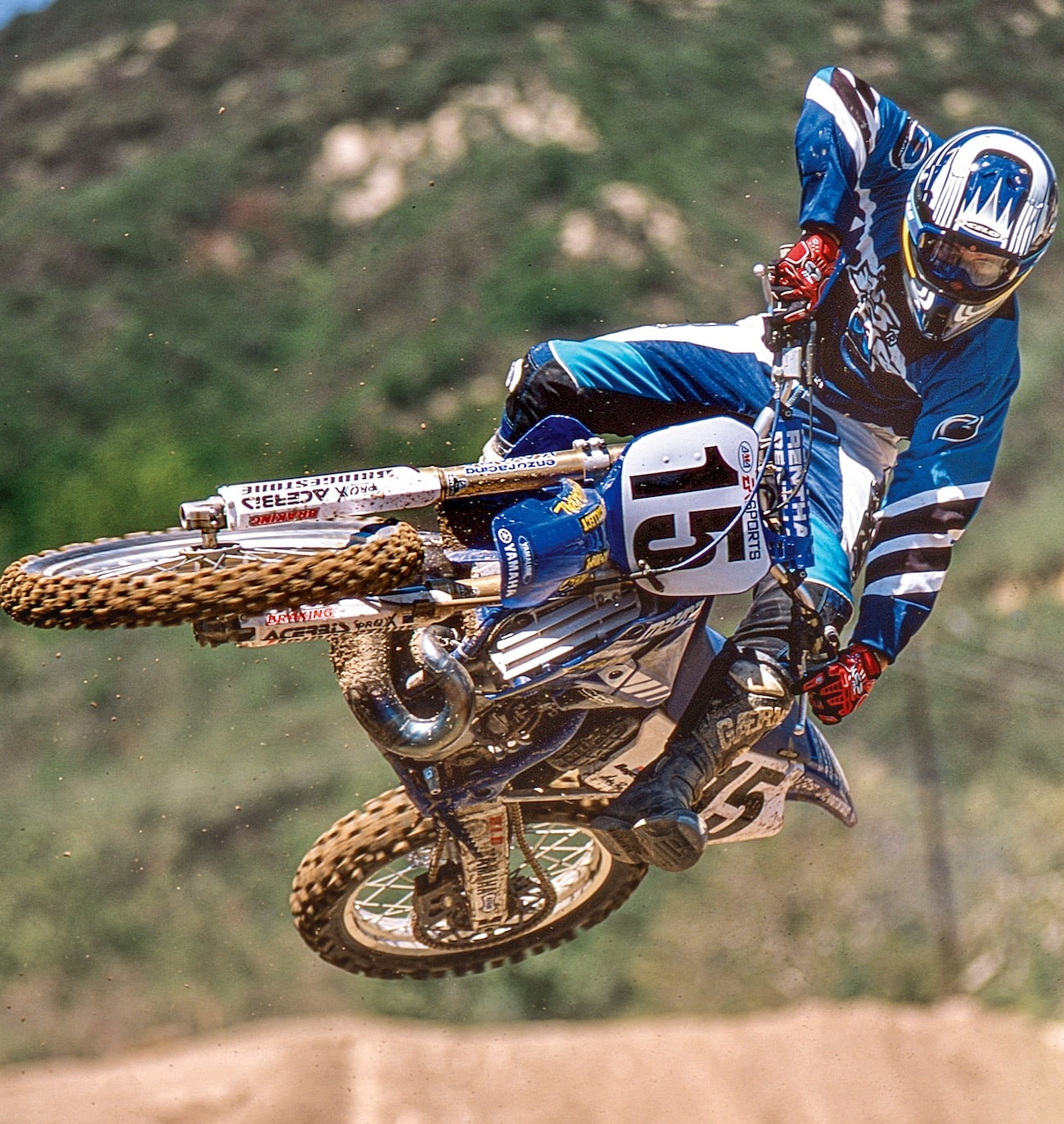
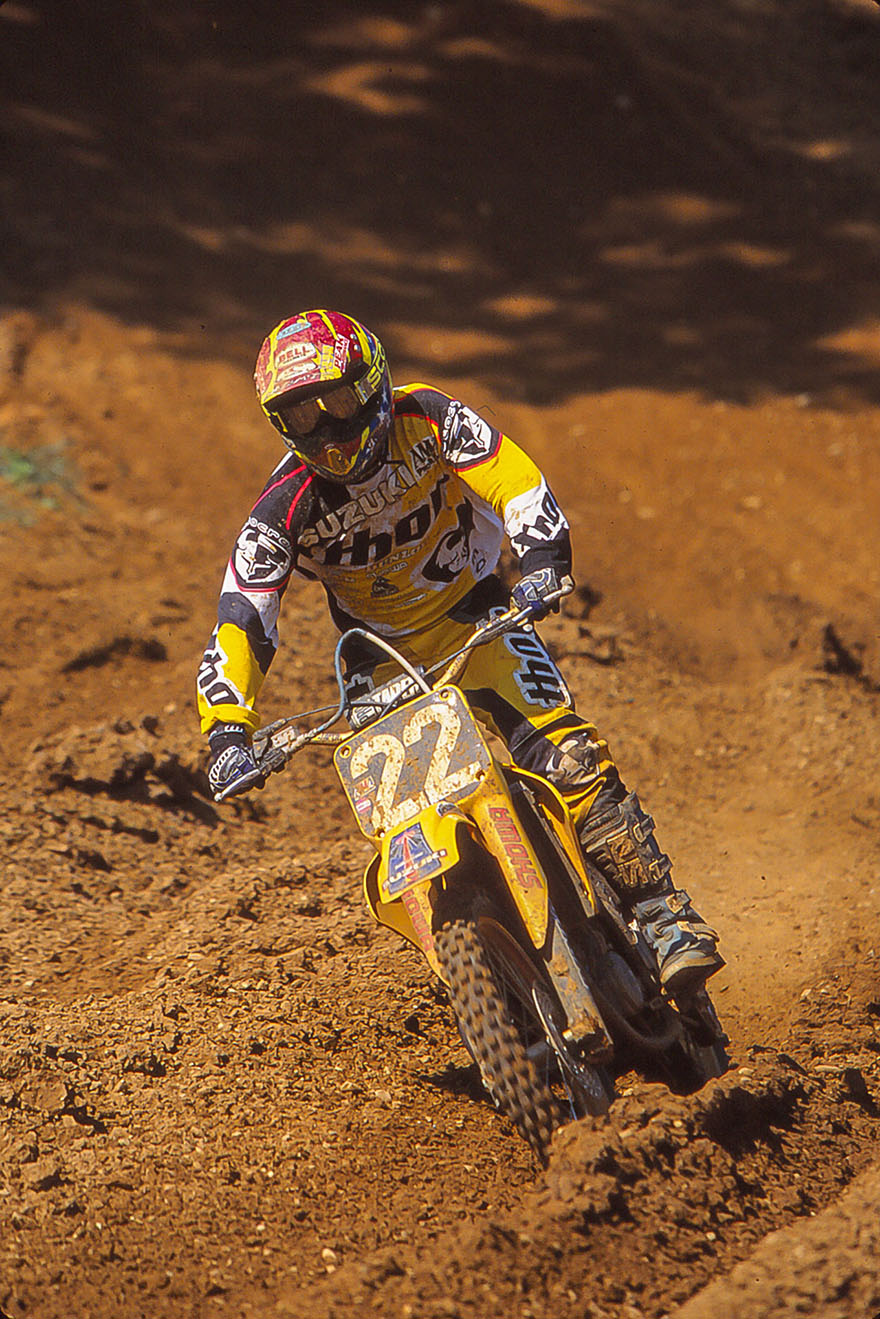
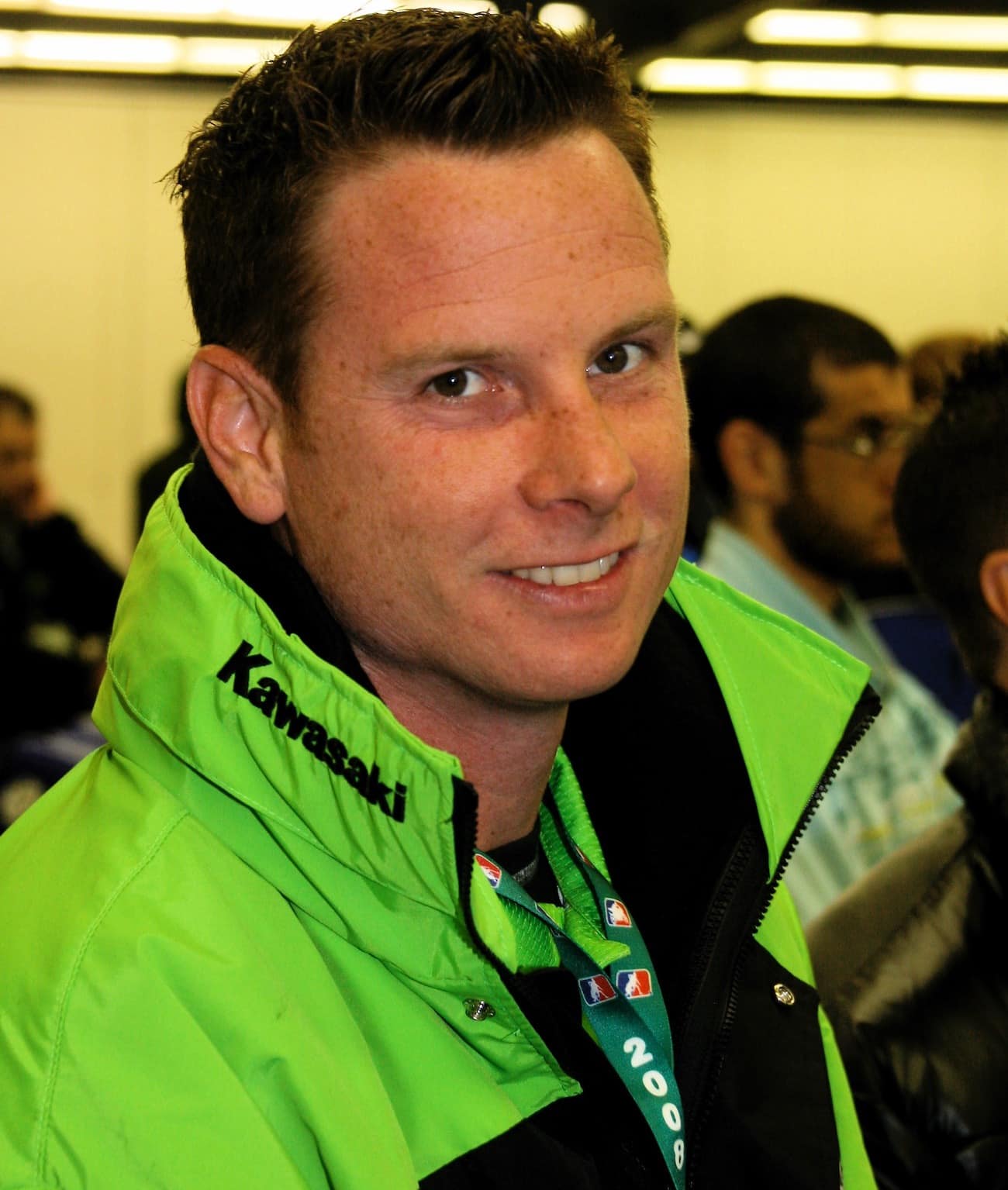



Comments are closed.